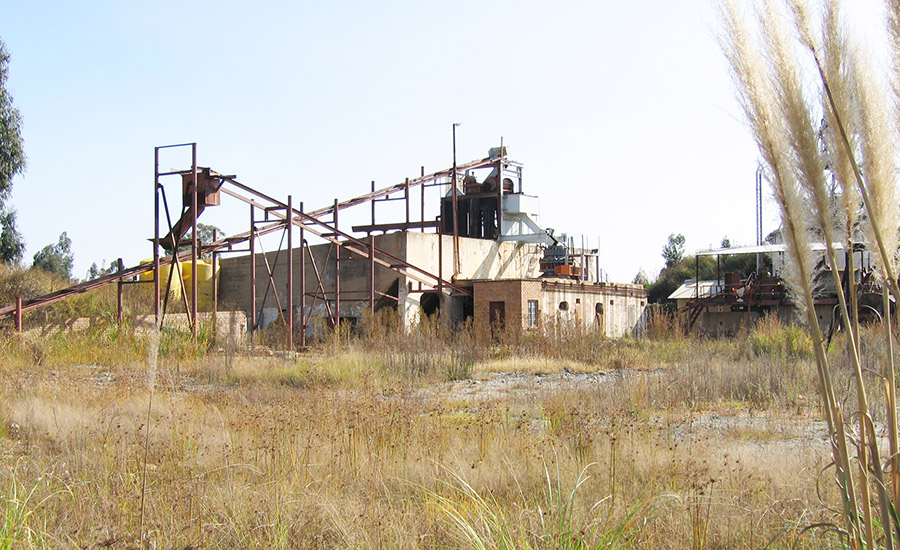From learning what appeals to investors and increasing the public’s awareness of your products, there are huge benefits to be gained from winning competitions such as Bright SCIdea. So, how can you benefit from entering and what’s in store from this year’s shortlisted teams?
There was a fine article recently in Nature that crystallised the many benefits of entering science competitions, which extend far beyond the coveted prize money.
Winning the competition can take your product from obscurity into the eyes and minds of the public. Importantly, winning immediately gives your innovation credibility as your product (and your vision for it) will inevitably have been vetted by a team of expert judges.
You will also gain valuable publicity. Not only will the organisers promote these innovations, the new-found exposure will increase traffic to your own website and social channels.
Another really important facet of these competitions is that they help develop business sense in line with scientific innovation. In the aforementioned Nature piece, Ulrich Betz, Vice-president of Innovation at Merck, said: ‘Joining competitions can be a useful way for researcher-entrepreneurs to learn what appeals to investors and companies — training that many academic researchers lack… Participants have told me they’ve become more confident working in science and business after taking part.’
Indeed, this tallies with the experiences of last year’s BrightSCIdea winners, Metallogen. The team developed a novel nanoparticle spray that assists the natural process of phytoremediation to extract rare metals from mining. These metals can be sold on the market while decontaminating land next to mining sites at the same time.
Last year’s Bright SCIdea winners used a novel approach to boost metal recovery on old mining sites and decontaminate the land.
However, having an ingenious idea is one thing. Bringing it to market is another. And this is where the training for all the shortlisted teams helped. Metallogen’s John O’Sullivan and Rafael Hunt-Stokes said: ‘The competition has also taught us how to carry out market research and put together a cogent business plan, with the pitching training giving us the ability to convey our business idea in a compelling manner to investors and other stakeholders.’
>> Inspired by Metallogen’s success at Bright SCIdea? Read more about them in our news article.
This year’s Bright SCIdeas
So, from network building to training and advice on key areas such as intellectual property, these competitions can sharpen your innovations and bring them to that all-important next stage. That’s exactly what the shortlisted teams for this year’s BrightSCIdea plan to do.
This year’s entrants have certainly taken it upon themselves to tackle some of society’s grandest challenges. The Eolic Wall team, hailing all the way from the National University of Engineering in Peru and Universidade Estadual Paulista in Brazil, has created a wind energy system to help in our low-carbon energy transition. The Unmasked team (from the University of Durham) is also seeking to address the UK energy crisis while tackling waste by producing insulation materials from disposable face masks.
In health, the BioTech Inov (University of Coimbra, Portugal) team has entered a ‘highly efficient and versatile nanotechnological subcutaneous biomedical device with a high lifespan’, and the Hatton Cross team (from University of Warwick, QMUL, and Imperial College, London) has also submitted a wearable device that aims to enhance the wearer’s quality of life.
In an effort to address mental wellbeing, the Happy BioPatch team (from Oxford University and Manchester University) has created ‘a wearable gadget which continuously monitors cortisol levels aiming to prevent serious consequences as a result of stress’. Finally, the CardiaTec team (from the University of Cambridge) is specialising in tackling cardiovascular disease.
There’s so much to be gained from being part of competitions such as BrightSCIdea. We can’t wait to hear from the leaders of tomorrow.
Who knows? Maybe this will be the first you hear from a future Nobel prize winner?
>> Keep an eye out on Twitter for all of the wonderful innovations in this year’s BrightSCIdea competition at: @SCIupdate.
We need to create more diverse paths into research and scientific innovation. Professor Dame Ottoline Leyser, Chief Executive of UK Research and Innovation, explains how industry clusters and a change of mindset could help.
What do you picture when someone mentions a chemist? Maybe you see someone like you working in a lab or office with your colleagues.
But what do people at the bus stop think? What would a secondary school student say? Do they see someone like them – or do they imagine an Einstein-like figure hidden away in a dark room with crazed hair and test tubes?
One of the most interesting messages from Professor Dame Ottoline Leyser’s Fuelling the Future: science, society and the research and innovation system talk on 29 September was the need to make sure science and technology are seen as viable careers for people throughout society.
Prof Dame Ottoline Leyser
You don’t need to be a genius to work in research and innovation. You don’t necessarily need to be a specialist, and you certainly don’t need to be hunched over a microscope with a jumble of figures and formulae on a board behind you. An array of different people, technical and non-technical, are needed to make the sector thrive.
The narrow pathway of talent
Part of Dame Ottoline’s job as Chief Executive of UK Research and Innovation (UKRI) is to improve access to these sectors and to make sure that great ideas aren’t lost due to daunting entry barriers.
‘It’s a huge challenge,’ she said. ‘A large part of the challenge is the narrow concept that we all have of what a researcher and innovator look like.’
Leyser spoke about the need to create diverse routes through the system rather than squeezing everyone through the same narrow path. ‘The assessment criteria we use for individuals have become narrower and narrower,’ she added. ‘Some of it, ironically, is to make the system fairer, but objectivity in creativity is a total pipe dream. You end up crushing creativity by narrowing the criteria.’
She noted that those with mixed careers – interwoven with varied experiences – are to be welcomed. ‘That’s nothing to do with compromising excellence,’ she said. ‘Real excellence comes in multiple forms.’
>> Would you like to attend more talks like this one? Check out our Events page.
Challenging times
However, Leyser also spoke of the need to level up the UK from a productivity perspective. One way to do this is through smart specialisation and industry clusters. She mentioned Lincoln as an area where this approach worked well. Lincoln is home to extensive agriculture and the multinational technology corporation Siemens. As such, it made sense to help make it a centre for agricultural robotics.
UKRI is investing heavily in research and innovation into Net Zero energy solutions.
As the largest public funder of research and innovation in the UK, UKRI has a major role to play in funding such industry clusters and intelligent innovation. It has funded more than 54,000 researchers and innovators, and UKRI grants have generated almost 900 spinouts since 2004.
These include Oxford Nanopore, a biotech company whose DNA sequencing technology is now valued at £2.5bn. It has also cast an eye on the future, including delivering more than £1bn in R&D relevant to Artificial Intelligence and in excess of £1bn towards Net Zero energy solutions.
Leyser noted that the UKRI’s goal is to embed research and innovation more broadly across society – for it to be ‘by the people and for the people, rather than the exclusive domain of the privileged few’.
It is a grand challenge, but such sentiments are certainly encouraging.
More people are looking at their nutritional intake, not only to improve wellbeing but also reduce their environmental impact. With this, comes a move to include foods that are not traditionally cultivated or consumed in Europe.
Assessing whether this growing volume of so called ‘novel foods’ are safe for human consumption is the task of the European Food Safety Authority. The EFSA points out, ‘The notion of novel food is not new. Throughout history new types of food and food ingredients have found their way to Europe from all corners of the globe. Bananas, tomatoes, tropical fruit, maize, rice, a wide range of spices – all originally came to Europe as novel foods. Among the most recent arrivals are chia seeds, algae-based foods, baobab fruit and physalis.’
Under EU regulations any food not consumed ‘significantly’ prior to May 1997 is considered to be a ‘novel food’. The category covers new foods, food from new sources, new substances used in food as well as new ways and technologies for producing food. Examples include oils rich in omega-3 fatty acids from krill as a new source of food, phytosterols as a new substance, or nanotechnology as a new way of producing food.
Providing a final assessment on safety and efficacy of a novel food is a time consuming process. At the start of 2021 the EFSA gave its first completed assessment of a proposed insect-derived food product. The panel on Nutrition, Novel Foods and Food Allergens concluded that the novel food dried yellow meal worm (Tenebrio molitor larva) is safe for human consumption.
Dried yellow meal worm (Tenebrio molitor larva) is safe for human consumption, according to the EFSA.
Commenting in a press statement, as the opinion on insect novel food was released, Ermolaos Ververis, a chemist and food scientist at EFSA who coordinated the assessment said that evaluating the safety of insects for human consumption has its challenges. ‘Insects are complex organisms which makes characterising the composition of insect-derived products a challenge. Understanding their microbiology is paramount, considering also that the entire insect is consumed,’
Ververis added, ‘Formulations from insects may be high in protein, although the true protein levels can be overestimated when the substance chitin, a major component of insects’ exoskeleton, is present. Critically, many food allergies are linked to proteins so we assess whether the consumption of insects could trigger any allergic reactions. These can be caused by an individual’s sensitivity to insect proteins, cross-reactivity with other allergens or residual allergens from insect feed, e.g. gluten.’
EFSA research could lead to increased choice for consumers | Editorial credit: Raf Quintero / Shutterstock.com
The EFSA has an extensive list of novel foods to assess. These include dried crickets (Gryllodes sigillatus), olive leaf extract, and vitamin D2 mushroom powder. With the increasing desire to find alternatives to the many foods that we consume on a regular basis, particularly meat, it is likely that the EFSA will be busy for some time to come.
















